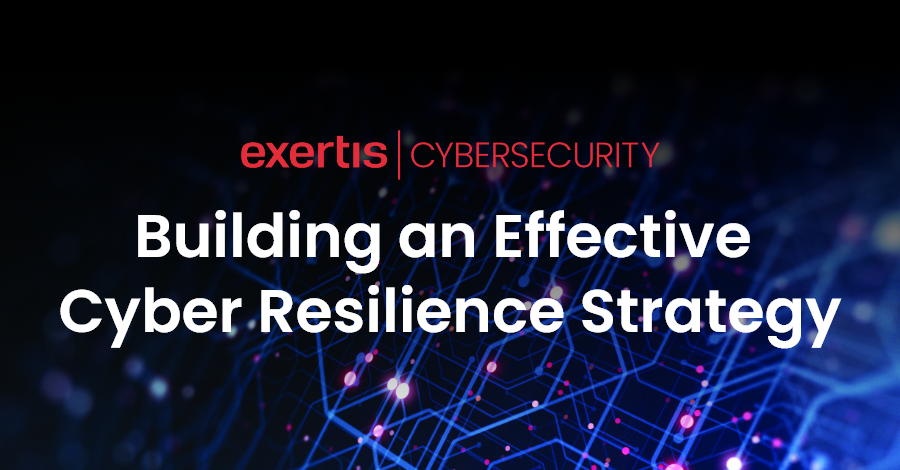Building an Effective Cyber Resilience Strategy
A cyber resilience strategy is a set of policies, procedures, and technologies that an organisation implements to prevent, detect, respond to, and recover from cyber-attacks. In this document we will outline key components of a cyber resilience strategy and provide tips on how to develop and implement one in your business.

Prevent
The ‘prevent’ stage of the cyber resilience cycle is focused on reducing the risk of a cyber incident or breach from occurring in the first place. The primary goal of this stage is to implement proactive measures and security controls to prevent cyber threats from successfully targeting the organization’s assets and systems.
OpenText Cybersecurity’s Security Awareness Training is an online training program designed to educate employees on best practices for maintaining good cyber hygiene, recognizing and reporting suspicious activity, and following security policies and procedures. The program provides interactive training modules covering a range of cybersecurity topics, including phishing, malware, password management, social engineering, and more.
Identify
The ‘identify’ stage of the cyber resilience cycle refers to the process of identifying potential cyber risks and vulnerabilities that could impact a business’s assets, systems, and operations. This involves identifying all potential attack vectors, such as external or internal threats, malicious actors, or accidental breaches.
A good place to start is ensuring your business has got Cyber Essentials. Cyber Essentials is a UK-government-backed cybersecurity certification which is highly recommended for SMEs because this certification protects you against 98.5% of the most common cyber threats.
If you’re looking for an added layer of security, Cyber Essentials + goes one step further and also includes an independent assessment carried out by a licensed auditor.
You can find out more here.
TIP: Your business should map out their critical business functions and assets, understand their value and impact, and prioritize them according to their criticality. A trusted IT partner can help you with this.
Detect
The ‘detect’ stage of the cyber resilience cycle refers to the process of detecting potential cyber threats and incidents in real-time. This stage involves implementing monitoring and detection tools and technologies to identify any anomalies, unauthorised access attempts, malware infections, or other suspicious activities that could compromise an organisations systems and data.
The CyberSmart Dashboard acts as a central hub, where all information from the apps on your company devices is gathered. It allows the administrator in your business to manage security and compliance across every device, totally remotely.
The cloud-based dashboard offers visibility across your business and will identify any vulnerabilities on Windows, Mac, Apple or Android devices. This allows your organisation to remotely monitor and fix any issues, ensuring continuous protection and compliance.
You can find out more about the CyberSmart dashboard in the ‘resources’ section on this webpage: https://info.exertis.co.uk/cybersmart-security/
TIP: Organisations also need to establish incident response procedures to respond quickly and effectively to detected security incidents.
Protect
The ‘protect’ stage of the cyber resilience cycle refers to the process of implementing security controls and measures to prevent potential cyber threats from accessing an organisation’s systems and data.
Installable on any device, CyberSmart’s Active Protect continually runs in the background of your companies’ device, assessing security every 15 mins. If a device fails a security check, you’ll be notified via the CyberSmart Dashboard with step-by-step guidance on how to fix the issue.
Another useful security solution is OpenText Cybersecurity’s Endpoint Protection, which provides advanced threat detection and prevention capabilities using machine learning algorithms, behavioural analysis, and real-time threat intelligence. It can identify and block known and unknown malware, ransomware, and other advanced threats before they can cause damage to endpoint devices.
Finally, OpenText Cybersecurity’s DNS Protection is a cloud-based security solution that protects organizations from cyber threats by monitoring and filtering Domain Name System (DNS) traffic.
Interested in finding out more about any of the above solutions? Contact your IT partner today or reach out to Matthew.Swindail@exertis.co.uk
Respond
The ‘respond’ stage of the cyber resilience cycle is focused on the organisation’s response to a cyber incident or breach. The primary goal of this stage is to contain the incident, minimise the damage caused, and restore normal business operations as quickly as possible.
Cybersmart’s Insurance solution provides organisations with coverage for financial losses and liabilities that may result from a cyber incident or data breach. This includes coverage for expenses such as legal fees, notification costs, and forensic investigations, as well as compensation for losses resulting from data theft or business interruption.
Recover
The ‘recover’ stage of the cyber resilience cycle is focused on restoring normal business operations after a cyber incident or breach. The primary goal of this stage is to recover data, systems, and applications that may have been impacted by the incident and ensure that they are functioning properly.
OpenText Cybersecurity’s Cloud-to-Cloud Backup is a solution designed to help organizations protect their data and applications in cloud environments. Specifically, it enables organizations to back up data and applications that are hosted in one cloud environment, such as Microsoft Office 365, and restore them to another cloud environment or on-premises infrastructure.
The solution supports a range of cloud applications and services, including Microsoft Office 365, Google G Suite, Salesforce, Box, and more. It provides automated, continuous backups of all data, including email, files, and other cloud-based content. These backups are stored in a secure, compliant cloud environment that meets industry-specific regulatory requirements.


